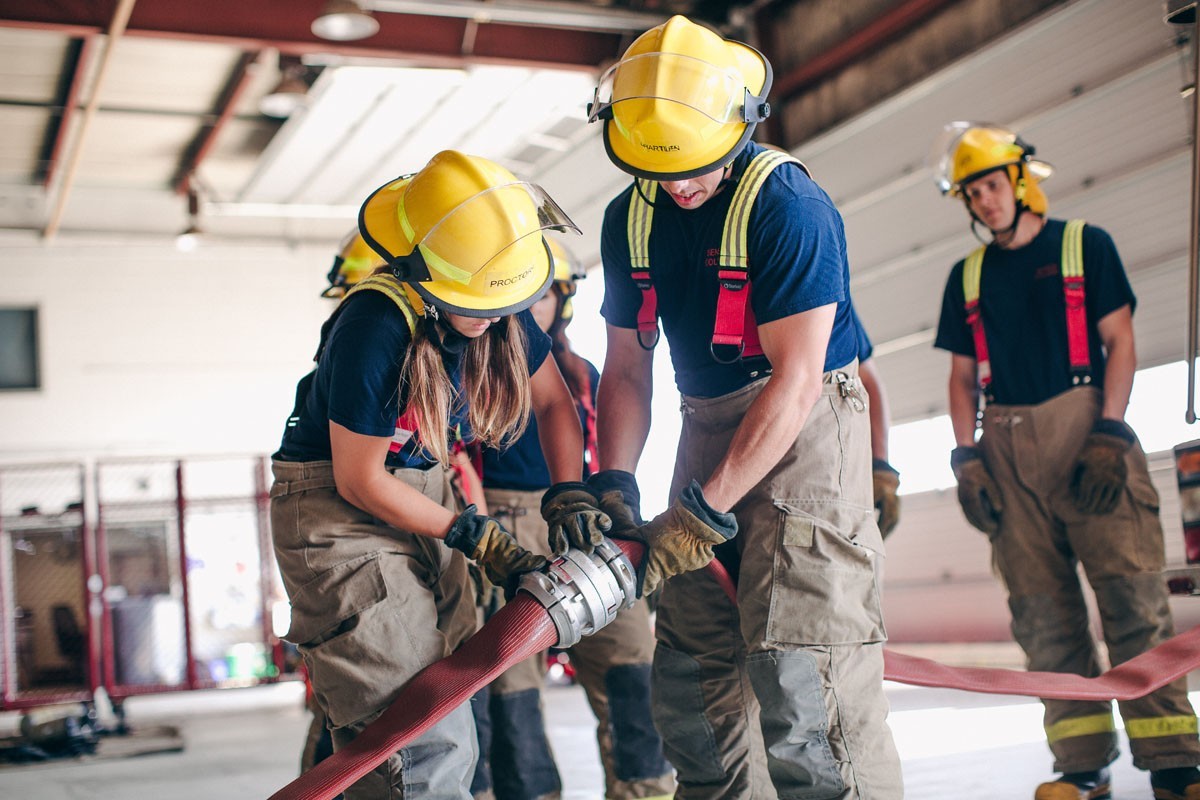Home » Course Layouts » Free Course Layout Udemy
Firefighting is the act of attempting to prevent the spread of and extinguish significant unwanted fires in buildings, vehicles, woodlands, etc. A firefighter suppresses fires to protect lives, property and the environment. Firefighters typically undergo a high degree of technical training. This involves structural firefighting and wildland firefighting. Specialized training includes aircraft firefighting, shipboard firefighting, aerial firefighting, maritime firefighting, and proximity firefighting.
0
57
English
English [CC]
- Learn basic syntax that can apply to any language.
- Learn what is a programming language and the basic concepts for beginners.
- Understand what is Javascript in it's truest form.
- Know the basic syntax of Javascript.
- Know some hidden quirks in Javascript.
Description
One of the major hazards associated with firefighting operations is the toxic environment created by combustible materials. The four major risks are smoke, oxygen deficiency, elevated temperatures, and poisonous atmospheres. Additional hazards include falls and structural collapse that can exacerbate the problems encountered in a toxic environment. To combat some of these risks, firefighters carry self-contained breathing equipment. The first step in a firefighting operation is reconnaissance to search for the origin of the fire and to identify the specific risks. Fires can be extinguished by water, fuel or oxidant removal, or chemical flame inhibition.
Firefighters Skills:
Firefighting requires skills in fire suppression, rescue, and hazardous materials mitigation. Firefighters must also have, or be able to acquire, knowledge of department organizations, operations, and procedures, and the district or city street system they will have to negotiate in order to perform their duties.
They must meet minimum physical fitness standards and learn various firefighting duties within a reasonable period.
Examples are:
- Building construction
- Fire dynamics
- Firefighting PPE
- Fire extinguishers
- Ropes and knots
- Ground ladders
- Forcible entry
- Structural search and rescue
- Tactical ventilation
- Fire hose operations and streams
- Fire suppression
- Overhaul, property conservation, and scene preservation
- Building materials, structural collapse, and effects of fire suppression
- Technical rescue support and vehicle extrication operations
- Foam fire fighting, liquid fires, and gas fires
- Hazardous materials response
- Fire apparatus driver/operator - trained to drive fire apparatus to and from fires and other emergencies, operate fire-apparatus pumps and aerial devices, and maintain apparatus.
- Hazardous materials technician - certified to mitigate hazardous materials and CBRNE emergencies.
- Rescue technician - certified to perform rescues such as high-angle rope, trench, structural collapse, confined space, vehicle and machinery, water, ice, and cave or mine rescues.
- Airport firefighter - trained in ARFF.
- Wildland firefighter - trained to extinguish fires in outdoor vegetation, including the wildland/urban interface.
Course content
-
- PPP Protective Equipment 00:20:00
- Head Protection 00:00:00
- Structural PPE 00:40:00
- Why use PPP 00:10:00
-
- National Fire Protection Association 00:10:00
- Caveats 00:10:00
- Some Problems / Structure Gear 00:10:00
- Inspection 00:30:00
- Routine Cleaning 00:10:00
- Advanced Cleaning 00:20:00
- Purpose of the Standards Around the World FREE 00:30:00
- British Standards FREE 02:00:00
- European Standards FREE 02:00:00
N.A
- 5 stars0
- 4 stars0
- 3 stars0
- 2 stars0
- 1 stars0
No Reviews found for this course.
Instructor
OpenCoursa
Accessible Education for Everyone
5
5
6
24220
4637
We are an educational and skills marketplace to accommodate the needs of skills enhancement and free equal education across the globe to the millions. We are bringing courses and trainings every single day for our users. We welcome everyone woth all ages, all background to learn. There is so much available to learn and deliver to the people.
Explore Free Courses
Access valuable knowledge without any cost.
{"title":"","show_title":"0","post_type":"course","taxonomy":"course-cat","term":"engineering-skills,health-and-safety","post_ids":"","course_style":"free","featured_style":"course6","masonry":"","grid_columns":"clear4 col-md-3","column_width":"268","gutter":"30","grid_number":"4","infinite":"","pagination":"","grid_excerpt_length":"20","grid_link":"1","grid_search":"0","course_type":"","css_class":"","container_css":"","custom_css":""}












